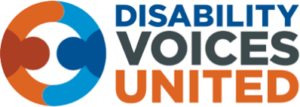Augmentative and Alternative Communication Resources
From Prentrom
When we google or look up the meaning of the word “communication” the definition will say: the imparting or exchanging of information or news. So what happens when we are faced with barriers or limitations of communication?
For persons with speech communication disorders, there is a term called augmentative and alternative communication (AAC) which is used to describe various methods of communication that can help people who are unable to use verbal speech to communicate. AAC methods vary and may be personalized to meet each person’s individual needs.
Who can benefit from AAC?
Any person who experiences difficulty with communication may benefit from AAC.
Some people need AAC only for a short time, while others may use it throughout their lives.
AAC can support an individual to express their needs and wants, and more fully participate in decisions that affect their lives. AAC also benefits family members and caregivers or service providers that support them with interacting and or engaging with the individual more fully.
Who uses AAC?
Many different AAC methods are used by people of all ages with various learning or physical difficulties.
- Some individuals need AAC because of a condition since birth, such as cerebral palsy, autism, neurodevelopmental disorder, or a learning disability.
- Other people need AAC because of their loss of the ability to communicate due to a stroke, accident, brain injury, or degenerative disease.
How Do AAC Devices Work?
Speech-generating devices (SGDs) produce electronic voice output from a device that allows the individual to communicate. These portable electronic devices allow the person to select letters, words, and phrases, by itself or in combination, to be spoken aloud in a pre-recorded or computer-generated voice also known as text-to-speech.
When a person is limited in using their hands to access the speech generating device, they are still able to generate speech using one or more alternate methods:
- Eye gaze or tracking, where the user looks at the device which registers where the eyes rest;
- Head pointing, where a reflective dot is placed on the user’s head which the device registers as the user points his/her head at the screen;
- Joystick; or
- Switches, which can be activated by just one body movement to push to navigate through the device. Activation of the switch(es) (e.g., by knee movement, head movement, eye blink, etc.), lets the individual scan through words on the screen.
The speed and pattern of these alternative methods can be customized to accommodate the user’s ability and preferences.
Additional AAC Resources
Resources to gain more information on AAC can be found at the following website links:
- AAC for Autism
- Down Syndrome Connection of the Bay Area
- Communication Technology Education Center
- The Center for AAC & Autism
- AAC Institute
- National Joint Committee on the Communication Needs of Persons with Severe Disabilities
- OCALI (Ohio Center for Autism and Low Incidence)
- International Society for Augmentative and Alternative Communication (ISAAC) (and USSAAC, the US Chapter)
- The Center for Accessible Technology



